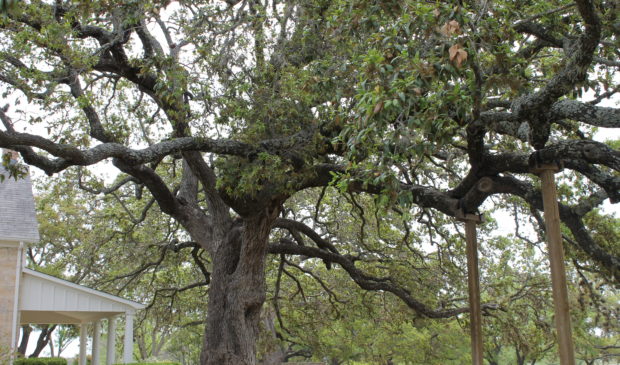Abbott takes aim at Austin’s tree protections
Thursday, July 6, 2017 by
Jack Craver Austin leaders who watched with dismay as GOP lawmakers spent much of the recently concluded legislative session undermining city policies on immigration, ride-sharing and short-term rentals could at least take comfort in the fact that the state did not completely take away its ability to protect trees.
In fact, city leaders welcomed a tree-regulation bill that passed overwhelmingly with the backing of a variety of interests, including municipalities, conservation groups and developers. The legislation, Senate Bill 744, would require municipalities that impose fees for tree removal to reduce those fees if the property owner plants new trees.
“We worked really hard … to come up with a market-based approach that would ease the mitigation fees but also provide the incentive to plant more trees,” said Ned Muñoz, vice president of regulatory affairs for the Texas Association of Builders, one of the key groups supporting the bill.
Muñoz said he was “disappointed and surprised,” therefore, when Gov. Greg Abbott vetoed the legislation, saying that the system it would put in place still infringed on the rights of property owners to do what they like with vegetation on their land.
In a statement announcing his intent to call the legislature back for a special session in July, Abbott highlighted “preventing cities from regulating what property owners do with trees on private land” as one of the 20 initiatives he wants lawmakers to take up.
Unsurprisingly, the person responsible for overseeing Austin’s tree regulations is deeply concerned about the governor’s direction.
“We see trees here and increasingly across the country as a valuable piece of infrastructure,” said Keith Mars, the city of Austin arborist. In addition to reducing air pollution by absorbing carbon dioxide, trees are a key natural defense against Austin’s increasingly frequent and intense floods, and they offer a key health benefit by helping reduce the “urban heat island effect,” said Mars.
Currently, residential property owners in Austin are free to remove any tree that is less than 19 inches in diameter. To chop down anything larger requires an administrative review by city staff to determine whether the removal is necessary for “reasonable use” of the property. If the removal is approved, the property owner must either plant new trees to make up for the loss of vegetation or pay a fee-in-lieu into the city’s tree preservation fund.
The rules are stricter for commercial property owners; they must receive approval to take down any tree larger than 8 inches in diameter.
The city has also put in place an additional level of scrutiny for “heritage trees” that are native to the area and have diameters greater than 24 inches. Unless staff determines that a tree is either dead or a hazard, removal can only be approved by one of the city’s two citizen land use commissions.
Of Austin’s estimated 33 million trees, only about 1 percent, or 400,000, are large enough to be protected by city rules. That’s all the more reason that they should be protected, said Mars.
“These larger trees provide the lion’s share of infrastructure services, such as slowing down stormwater, shading our homes, and keeping our sidewalks cooler. In short, the greater the tree size, the greater the benefits,” he said in an email.
Although Abbott’s statements suggest the governor is aiming for a bill that completely outlaws any type of tree-protection ordinance, it is far from clear what legislation, if any, will emerge from of the special session. Neither Mars, Muñoz nor Brie Franco, who heads the city’s state lobbying effort, offered a prediction for what will come.
This story has been updated to reflect that the city’s heritage tree rules go into effect for trees larger than 24 inches in diameter, not 30. We regret the error.
Photo by Billy Hathorn made available through a Creative Commons license.
The Austin Monitor’s work is made possible by donations from the community. Though our reporting covers donors from time to time, we are careful to keep business and editorial efforts separate while maintaining transparency. A complete list of donors is available here, and our code of ethics is explained here.
You're a community leader
And we’re honored you look to us for serious, in-depth news. You know a strong community needs local and dedicated watchdog reporting. We’re here for you and that won’t change. Now will you take the powerful next step and support our nonprofit news organization?






